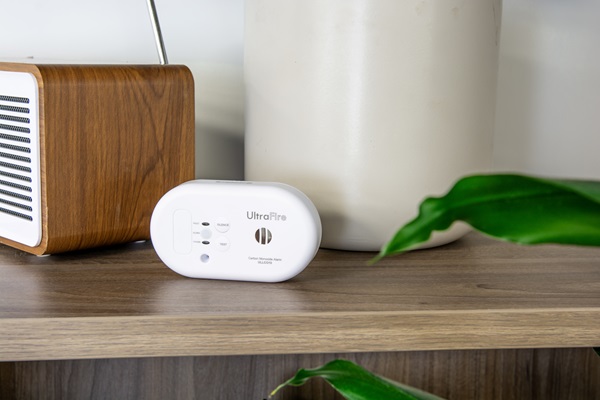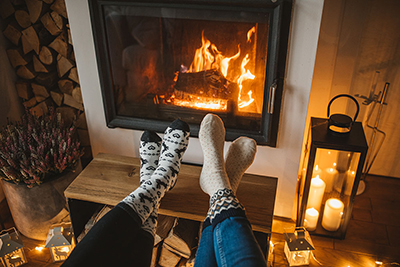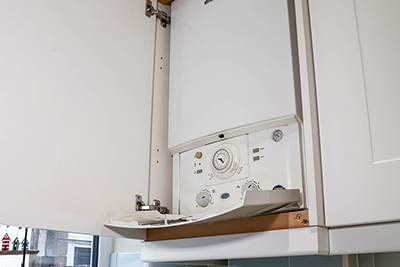-
Contact
Sales & Customer Service
0800 612 6537 support@safelincs.co.uk Live ChatDelivery Enquiries
0800 077 6149 - Resources
Fire & Safety Solutions
CALL OUR TEAM NOW 0800 612 6537
Lines open today 8am - 6pm
Free Delivery
on 100s of Products
Live Chat - Online
Instant help & Advice
Trade Discounts
and exclusive pricing
0% Credit Available
Open an account now
5 Star Customer Feedback
Are Carbon Monoxide Detectors Required by Law?
In short: yes, but there isn't just one, single rule to follow.
Legislative requirements for carbon monoxide alarms vary by which country of the UK your house is in and whether it is rented or owner-occupied. Most legislation advises at least one carbon monoxide alarm is fitted near new or replacement fuel-burning appliances, though rented properties often require a CO alarm immediately even if no appliances are being installed or replaced.
This help guide outlines the general carbon monoxide detector requirements for each country of the UK along with links to relevant legislation and official government guidance documents, followed by a table summarising the data. At the end of the guide we also have links to further reading on fire safety for homeowners and landlords.
Where Should Carbon Monoxide Alarms be Installed?
Government guidance recommends the use of 'tamper-proof' or 'sealed for life' alarms such as those using lithium batteries, or alternatively mains-powered models which are directly wired into mains supply as opposed to plug-in types. They should be placed within 1 to 3 metres horizontally from the appliance – i.e. not above a stove where it would be in the path of steam or fumes – and:
- If on the wall: between the height of the appliance to 150mm below the ceiling.
- In living spaces: they should be positioned close to where the occupant's head is likely to be most of the time – e.g. on the bedside table.
- If on the ceiling: at least 300mm from any wall, light fitting, or other obstruction.
Do not install CO alarms within 3 metres of doors or windows, above radiators, or immediately close to anything that gives off steam or fumes like a cooker or shower room. Similarly, it is not recommended to install detectors in dusty areas such as workshops or garages. For more information, please check the manufacturer's instructions for your alarms.

England & Wales: Owner-Occupied
The Building Regulations Approved Document J covers combustion appliances and fuel storage systems and Requirement J3 states that, where a fixed combustion appliance is provided, appropriate provision shall be made to detect and give warning of the release of CO. The carbon monoxide alarm should be "powered by a battery designed to operate for the working life of the alarm" or be mains-powered (hardwired, not plug-in) but is only required for new or replacement fixed combustion appliances, meaning those which are permanently installed and not designed to be moved during their lifetime. Specific guidance for the installation of carbon monoxide alarms is stated in relation to all solid fuel appliances, gas appliances excluding those used solely for cooking, and all oil appliances. At the time of writing, these can be found in clauses 2.34 to 2.36, 3.43 to 3.45, and 4.30 to 4.32, respectively for each fuel type.
However, any and all materials can give off CO when burning, including gas cookers. Carbon monoxide can also spread from neighbouring properties or outside sources such as vehicle fumes. Because of this, Safelincs strongly recommends the installation of carbon monoxide detectors in every home, and also at head-height in bedrooms to protect occupants while sleeping.
England: Rented
The Smoke and Carbon Monoxide Alarm (Amendment) Regulations 2022 applies to all social housing and rental properties in England and Wales and requires working smoke and carbon monoxide (CO) alarms are installed. Specifically for carbon monoxide detectors, this 2022 update expanded existing requirements from just solid fuel burning appliances to include all fuel types.
One carbon monoxide alarm is required in any room used as living accommodation which contains a fixed combustion appliance (excluding gas cookers). There is no specific guidance on power type, though it is suggested to use models with sealed lifetime batteries over replaceable batteries – and when fitting a new or replacement appliance, Approved Document J should be followed which requires a sealed lifetime battery or mains-powered alarm.
Landlords are required to ensure alarms are present, installed in an effective way to protect occupants, and in working condition at the start of each tenancy. Occupants are responsible for regular testing of alarms and replacing batteries, where applicable, but replacing a faulty or end-of-life alarm is the landlord's responsibility.
Wales: Rented
Properties in Wales should also follow The Smoke and Carbon Monoxide Alarm (Amendment) Regulations 2022 as above, but where guidance overlaps or conflicts they must follow the Renting Homes (Fitness for Human Habitation) (Wales) Regulations 2022 instead.
For carbon monoxide alarms, the main difference is that there is no exclusion for gas appliances used solely for cooking.
Scotland: Owner-Occupied & Rented
Usually, properties are only subject to the Building Regulations and Tolerable Standards which were in effect when they were built, or the most recent requirement for planning permission or building control approval such as renovations and extensions. From February 2022, the Tolerable Standard guidance for chapters 16 and 17 was updated so that all homes in Scotland – both owner-occupied and rented – must be brought up to a certain minimum standard of fire and CO alarms. This legislation specifies a common minimum coverage; it does not take precedence over Building Regulations or other specific legislation that may stipulate more alarms are required.
In terms of carbon monoxide specifically, alarms are required in all rooms where there is an appliance of any fuel type (e.g. fireplace, boiler), excluding those solely for cooking, or a flue. All types of alarm must be mains powered (fixed wiring, not a mains plug) or powered by a tamper-proof lifetime battery.
Northern Ireland: Owner-Occupied
The Building Regulations Technical Booklet L sets out requirements for combustion appliances and fuel storage systems. Since 2012, the guidance has stated in clause 2.51 that a sealed battery or mains-powered carbon monoxide alarm should be provided with a new or replacement combustion appliance, excluding those designed solely for cooking purposes. The CO detector should be installed in the same room as the appliance if it is a room normally used by occupants; if it is, for example, a boiler located in a dedicated room / cupboard that occupants do not normally enter, the detector should be located just outside of that cupboard or room.
Northern Ireland: Rented
The Private Tenancies Act (Northern Ireland) 2022, under section 8, requires landlords provide and keep in proper working order 'sufficient appliances' for detecting and giving warning about dangerous levels of carbon monoxide. Tenants are responsible for taking proper care of the CO alarms and replacing units they have damaged, or caused to be inoperable through negligence. The legislation does not specify the power type, quantity, or positioning of alarms so Safelincs advises landlords to follow Technical Booklet L as described above for owner-occupied properties – though there was a public consultation period from 13th September 2023 to 6th December 2023 to address this shortcoming.
Since 2022, the regulations have been reviewed and The Smoke, Heat and Carbon Monoxide Alarms for Private Tenancies Regulations (Northern Ireland) 2024 state a carbon monoxide alarm should be installed in any room or circulation space which contains a fixed combustion appliance or flue, though this does exclude cooking appliances as per Section 2: Interpretation.
The 2024 Regulations come into effect from 1st September for new tenancies and 1st December for existing tenancies.
Unlike with the English and Welsh requirements for rental properties, the legislation and guidance for NI does not seem to specify tenants are responsible for changing batteries in their alarms, but it is strongly implied by the tenants' duty to take proper care of them.


Summary of Where Carbon Monoxide Alarms are Required
Recommended Reading
- Fire Prevention in the Home
- Which Smoke Alarm is Best?
- Updated Smoke and CO Alarm Regulations for Rental Properties
- Landlord Fire Safety Guide
- Fire Safety for Holiday Lets
- (GOV.UK) Fire safety: guidance for those with legal duties
FAQs: Frequently Asked Questions
Why is carbon monoxide dangerous?
Carbon monoxide (CO) is a colourless, odourless, tasteless gas that is undetectable by humans. Inhaling CO reduces the blood's ability to carry oxygen to the body's organs and cells.
Each year, over 50 people die in the UK from exposure to carbon monoxide. Many more people die through strokes and respiratory illnesses made worse by inhaling low levels of CO over prolonged periods.
To protect you and your family, purchase a carbon monoxide detector and use the test button weekly to check it is in working order.
What are the symptoms of carbon monoxide poisoning?
The symptoms of CO poisoning can range from mild flu-like symptoms such as headache, drowsiness, confusion, nausea and dizziness to more severe symptoms like breathing difficulties and irregular heartbeat. CO poisoning can ultimately lead to coma and death.
View more symptoms on our carbon monoxide information page.
Can smoke alarms detect carbon monoxide gas?
No, normal smoke alarms cannot detect carbon monoxide (CO). Only combined smoke and CO alarms can detect both fire and carbon monoxide gas.
Where should carbon monoxide detectors be positioned?
CO detectors should be installed near potential sources of carbon monoxide, essentially any fuel-burning appliances. As you are likely to be most affected by CO in areas of your home that you spend the most time in it is advisable to install alarms in those areas as well, such as at head height in the living room and bedrooms. If your property has an attached garage with a connecting door through to the house, it is recommended to fit a CO alarm inside the house leading from that doorway.
Carbon monoxide has been proven to spread into neighbouring properties through open windows, as well as through loft spaces in semi-detached or terrace houses.
Battery powered carbon monoxide alarms can typically be installed wall-mounted or left free-standing on flat, level surface. Combined smoke & CO alarms or mains-powered CO alarms are typically installed on the ceiling.
- Near an appliance: they should be placed within 1 to 3 metres horizontally from the appliance and between the height of the appliance to 150mm below the ceiling – i.e., not above a stove where it would be in the path of steam or fumes.
- In living spaces: they should be positioned close to where the occupant's head is likely to be most of the time – e.g., on your bedside table.
- On the ceiling: at least 30cm away from any wall, light fitting, or other obstruction.
Do not install CO alarms within 3 metres of doors or windows, above radiators, or immediately close to anything that gives off steam or fumes like a cooker or shower room. Similarly, it is not recommended to install detectors in dusty areas such as workshops or garages.
For more information, please check the manufacturer's instructions – you can download the PDF manual from the relevant product page on our site. You can also watch our video guide to positioning CO detectors.



















